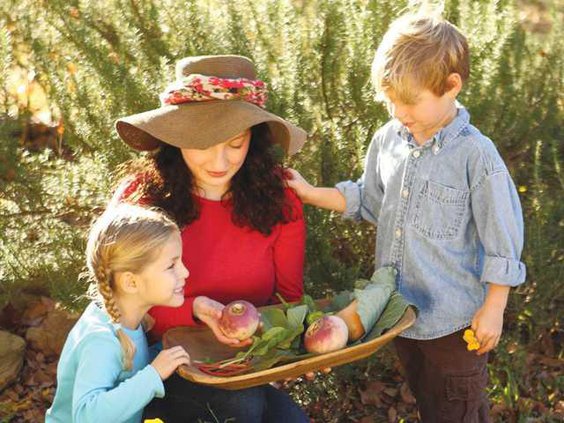Warm weather, continued care and robust plants have yielded a bounty of beautiful, fresh vegetables - and personal satisfaction - from your garden this season. As the weather cools and fall approaches, it is not time to hang up your hat, gloves and trowel for the year. Autumn provides optimum weather and ample opportunity to keep growing and harvesting delicious, healthy produce well into the season.
Some gardeners assume that when fall arrives and kids return to school, they’ll have less time to garden, and may experience less success from their garden plots. But cooler temperatures and fall conditions can actually make gardening easier and more enjoyable. Many of fall’s best-producing vegetables are also colorful, making them great additions to flower beds and containers.
If you loved summer gardening, you can keep your garden growing right through fall. Here’s how to make the most of fall season gardening:
Size up the soil
Most vegetable plants require full sun for six or more hours a day, and because fall provides a bit less sunlight than summer, you may need to relocate your plot to make the most of shorter days. If moving your garden isn’t an option, you can still take full advantage of sunshine by planting veggies in containers or by creating a raised bed in a sunny spot.
If you’ll be reusing your summer garden plot, remove any leftover debris. Don’t forget to pull up weeds before they go to seed. Fluff any compacted soil with a garden fork. Next, test the soil to see if any amendments are needed. Even if your soil is in good shape, adding a 2-inch layer of bagged compost or a balanced, natural fertilizer like Bonnie Plant Food can give plants a boost.
Be prepared for frost. Keep materials on hand to protect plants when frost threatens, such as floating row cover, a cold frame or a cloche. On frosty, cold nights, move container plants to a protected spot. Not sure when frost will arrive in your area? Check out the USDA frost map on the Bonnie Plants website.
Pick your plants
While crops like strawberries and tomatoes have faded to sweet summer memories, many plants thrive in fall. To ensure a successful harvest, it’s important to pick the right plants and give yourself a jump start by using transplants, rather than starting off with seeds. Planting six-week-old transplants ensures you’ll have the best opportunity to take advantage of fall’s shorter season, and you’ll harvest sooner than if you plant from seed.
Producers like Bonnie Plants provide garden retailers with transplants intended to grow well during the specific growing season and are suited for your geographic region. Seasonally appropriate transplants ensure you’ll have greater success in your garden. An added bonus of fall planting is that many cool crops are also packed with nutrition and are among the healthiest vegetables you can eat.
Choose hardy crops that can withstand light frost and temperatures as low as 25 degrees. Hardy Bonnie favorites for fall include:
u Broccoli - This versatile veggie is packed with vitamins K, C and A, and is a good source of folate.
u Cabbage - A staple of Oktoberfest celebrations across the country, cabbage comes in several varieties, all of which are high in beta-carotene, vitamins C and K and fiber.
u Kale - Some varieties of kale, like Winterbor Kale, actually taste better when kissed by frost. A prolific producer, kale thrives in fall gardens and is a good source of vitamins A, C, K and B6, as well as manganese.
u Leeks - Prized by gourmets for their milder flavor, leeks are frost-tolerant in all but the coldest planting zones. The health benefits of all onions are well documented, and leeks also add a pop of bright color to culinary dishes.
u Spinach - This nutrient-rich green does as well in fall’s cooler temperatures as it does in summer heat. Spinach will continue to produce throughout the season, providing a tasty source of vitamins A, C, K and E, as well as the minerals iron, potassium and magnesium.
The end of summer doesn’t have to herald the end of your garden harvest and enjoyment, or a return to the grocery store produce aisle. With the right fall crops, you can achieve a satisfying, healthful harvest throughout the fall. Visit www.bonnieplants.com to learn more about fall gardening and cool-weather crops.
Season-extending gardening tips for fall




